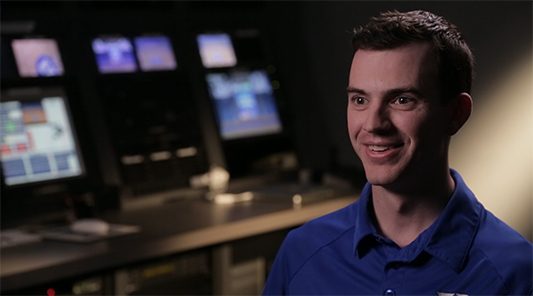Duke University

Duke University’s Blue Devil Network deployed a Quantum StorNext storage solution to gain capacity, performance, and accessibility for its fastgrowing volume of content.


Quantum StorNext Meets The Challenge of Managing Growing Video Content For Duke’s Blue Devil Network
From pre-season practices to NCAA championship games, the Blue Devil Network presents live and on-demand video on GoDuke.com, shares content with TV networks, and provides footage to coaches and players.
“Over the past 30 years, Duke men’s basketball has been one of the most successful basketball programs in the country, winning five national championships, achieving a number of conference championships, and earning a number-one ranking in the country for multiple years,” says Kevin Cullen, director of technology for Duke basketball.
The extensive use of video reflects Duke’s deep commitment to capitalizing on technology. “From video to analytics, we provide players and coaches with as much information as possible so they can optimize their game and make the best, most-educated decisions,” says Cullen.
Collecting Growing Volumes of High-Res Video Content
“The amount of footage has grown exponentially over the past five years,” says Chad Lampman, executive director of the Blue Devil Network.
“We are increasingly capturing high-resolution video and receiving uncompressed high-definition video from our network partners—the file sizes are gigantic,” says Lampman. “We need a storage environment that can continue to scale to meet our capacity and performance needs.”
Running out of Online Storage Capacity
Rather than archiving to tape, Duke wanted to keep as much content as possible on-line for editors and producers.
Ironically, the Duke’s success made that goal difficult to achieve. As teams competed in more post-season tournaments, the production team captured and stored more and more content. Eventually, it simply ran out of online storage capacity. “About two-thirds of the way through our season last year, we had to start taking content offline, moving it to tape, and storing tapes on shelves—we just didn’t have enough space,” says Lampman.
Identifying Top Storage Requirements: Reliability and Easy File Sharing
In selecting a new storage platform, reliability was one top priority. “We work in an always-on environment,” says Cullen. “Our coaches are up all night watching film after games. We needed a system that would be there with us the whole time.”
The ability to share content among video production teams was another. After Duke Basketball won the NCAA National Championship in 2015, production teams found it difficult to bring together footage from different storage silos. “It became a nightmare to share footage,” says Lampman. “We would sit around for an hour or two just copying different files to each other.”
“In some cases, we had stored the same footage twice,” says Cullen. “We realized there was a need to combine and share a lot of that video so we could all work off the same server system.”
Selecting the Stornext Platform
The Duke team called on LH Computer Services, an integrator specializing in media, entertainment, and sports, to help find a dependable storage solution that would enable Duke to expand online capacity and improve sharing.
After considering different options, the Duke team selected a Quantum StorNext M440 Metadata Appliance. It uses the StorNext 5 platform to manage large workflow environments, and can be combined with StorNext Q-Series disk to provide scalable, high-performance capacity that is cost-effective and easy to manage.
“The more people you talk to in the broadcast industry, the more you realize that it begins and ends with Quantum,” says Cullen. “Everybody wants to have it. It was the obvious choice for us.”
Streamlining Deployment & Integration
In deploying StorNext, the production team continued to use content from two existing SANs. One—an Apple Xsan—was converted to StorNext, leaving the data in place. Then the team deployed a StorNext QXS-1200 system to add much-needed capacity.
The process was painless. “The Quantum StorNext solution allowed us to integrate the existing content into StorNext as well as reuse the storage hardware seamlessly,” says Lampman. “It was a perfect transition—we had no issues at all.”
Gaining Scalability for the Future
The Duke production team now has a flexible, scalable platform that can accommodate changing requirements and growing data volumes well into the future. “Nobody knows what’s on the horizon for video—video formats continue to evolve and change. We have seen the introduction of HD, 3-D, 4K, and now 8K Ultra-HD video,” says Lampman. “We’re not entirely sure what the future holds, but with the Quantum StorNext platform, we know we have a foundation that we can build on.”


